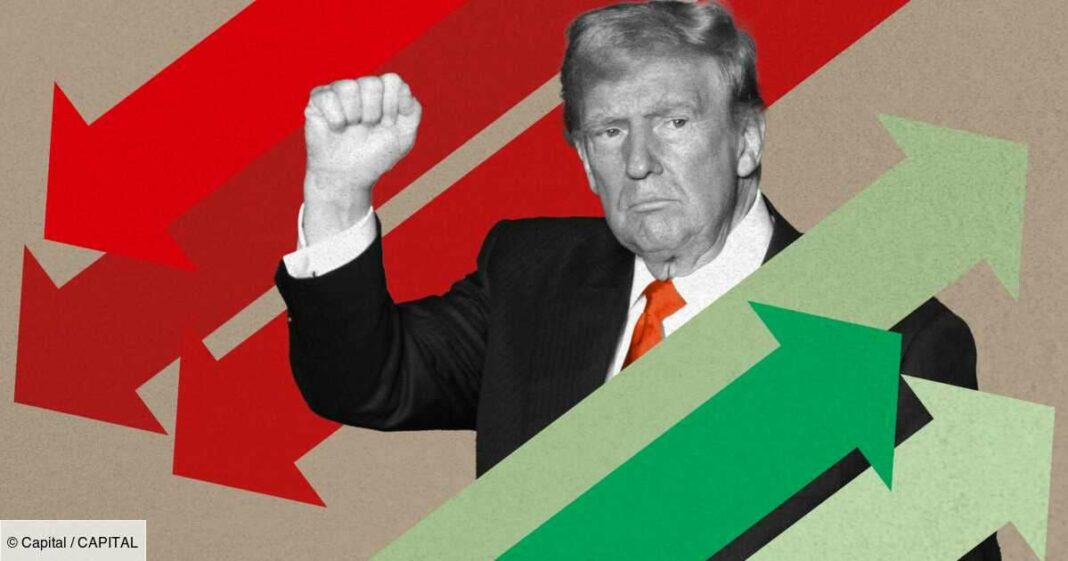Donald Trump’s return to the presidency raises questions about its impact on investment portfolios. With a Republican majority in Congress, his economic agenda could boost stocks through tax cuts and deregulation, but risks like inflation persist. The bond market is reacting with rising rates, while gold and cryptocurrencies face fluctuating demand influenced by global tensions. European markets have responded positively, but uncertainties loom, particularly regarding inflation and trade conflicts.
Trump’s Comeback: What It Means for Your Investments
Donald Trump has made a significant return to the political arena by winning the presidential election on November 6 in the United States. While his triumph as the Republican candidate was evident and the suspense was brief, the implications of his leadership on your investment portfolio remain uncertain.
With control of both the House of Representatives and the Senate, the 47th President of the United States is poised to implement his economic agenda, which includes raising tariffs, slashing corporate taxes, and easing regulations in the cryptocurrency sector. This business-friendly approach is generally favorable for investors; however, it also introduces potential risks, particularly concerning the resurgence of inflation.
Navigating the Market Landscape Post-Election
In the aftermath of the initial excitement surrounding ‘Trump-trades’, the stock market presents a challenging environment for investors. On the bond front, there is growing apprehension. U.S. Treasury bonds with a ten-year maturity are nearing a rate of 4.5%, a considerable increase from 3.6% just a couple of months ago. Market analyst Alexandre Baradez from IG highlights that this rise is noteworthy, especially since the Federal Reserve has embarked on a rate-cutting strategy, which typically lowers bond rates. For savvy investors, this scenario still offers opportunities to secure attractive yields with reduced risk by investing in U.S. debt through bonds.
As for gold and cryptocurrencies, the conclusion of electoral uncertainty in the U.S. may not overshadow other global factors. Ongoing geopolitical tensions, such as the conflict in Ukraine and renewed trade disputes with China, are expected to support gold prices, which might even approach the historic threshold of $3,000 per ounce in the near future. Meanwhile, Bitcoin has reached a record high, exceeding $75,000. However, it’s uncertain whether this surge will be sustained in the coming weeks.
According to Alexandre Baradez, the future performance of Bitcoin will hinge on whether Trump’s proposed deregulation measures come to fruition. Furthermore, a robust dollar (+1.7% against the euro this morning) and high U.S. bond rates typically disadvantage cryptocurrencies. In such circumstances, investors are likely to gravitate towards safer investments, like bonds, and the stability of the dollar.
What about European markets? The initial reaction to Trump’s election success has been positive, with the Paris stock market gaining 2% on the CAC 40. Baradez analyzes that European equity markets may view Trump’s victory and the potential for a more aggressive trade conflict as an opportunity to bolster their economies and stimulate corporate growth. Nonetheless, there are signs of uncertainty in the global economy, as evidenced by a slight increase in the French ten-year bond rate, now close to 3.2%. On this side of the Atlantic, however, there appears to be a more secure path to combating inflation, which could lead the European Central Bank to implement new rate cuts, reducing bond yields despite the recent election results. Baradez adds that even if inflation were to rise again in the U.S., Trump’s isolationist policies might shield Europe from severe repercussions.
